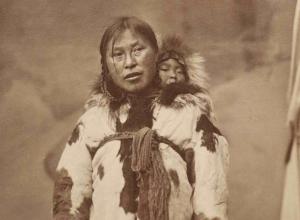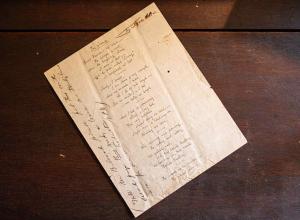Iconic National Geographic Cover Image Leads Heritage Auctions' Photographs Auction
Dallas - An oversized dye destruction print of one of the most iconic magazine cover images ever shot is expected to be among the top lots in Heritage Auctions’ Photographs Auction Oct. 12 in New York, an event that could eclipse $1 million total sales. The auction includes 430 lots from the 19th century to the 21st century, with collections of images by several photographers, including Steve McCurry, Eliot Porter and Jonathan M. Singer.
Steve McCurry’s Afghan Girl, 1984 (estimate: $30,000-50,000) captured the attention of readers worldwide when it appeared on the cover of National Geographic magazine in June 1985. The striking image captured Sharbat Gula when she was a 12-year-old Afghan girl in a refugee camp in Pakistan, her sea green eyes showing simultaneous curiosity and uncertainty - she never had been photographed before - about the camera pointed in her direction.
“This is the most recognized photograph in the history of National Geographic - I have heard it called ‘the First World’s Third World Mona Lisa,’” Heritage Auctions Photographs Director Nigel Russell said of the 36-1/2-by-24-1/2-inch image that is signed in ink lower margin recto by the photographer. “Her expression reveals an intimate glimpse into the way she is affected by the world around her.”
The auction features eight images by McCurry, including Dust Storm, Rajasthan, India, 1983 (estimate: $15,000-25,000), another oversized (37-1/8-by-24-5/8-inch) dye deconstruction print that is signed and annotated in black ink mount recto. One of three artist’s proofs from an edition of 25 + 3 APs, the image shows eight women huddled together, shielding themselves from the flying sand.
McCurry’s Ahmadi Oil Fields, Kuwait, 1991 (estimate: $15,000-25,000) is a powerful image taken during the Gulf War showing the juxtaposition of nature and the manmade world, with camels grazing while oilfields burn in the background. This 25-1/2-by-38-inch artist’s proof, from an edition of 15 + 1, is signed and annotated in ink mount recto.
Other featured works include:
· Robert Mapplethorpe Tulips, 1979 (estimate: $10,000-15,000)
· Erwin Blumenfeld Suzy Parker Solarized Profile with Jewelry, New York, 1946-47 (estimate: $10,000-15,000)
· Wang Qingsong China Mansion, 2003 (estimate: $10,000-15,000)
· Edward Steichen Still-life with Sink and Soap, 1930 (estimate: $8,000-12,000)
· Lászlo Moholy-Nagy Light Space Modulator, 1930 (estimate: $6,000-8,000)
· Julia Margaret Cameron Kate Keown, 1866 (estimate: $5,000-7,000)
· Richard Avedon Mike Nichols, circa 1960 (estimate: $4,000-6,000)
· Man Ray Serge Lifar as Sergeant in Barabau, 1925 (estimate: $4,000-6,000)
The auction includes 12 lots by Porter, a 20th-century American photographer known best for his photographs of nature, including:
· Western Landscapes (complete with twelve photographs), 1988 (estimate: $6,000-8,000)
· Portfolio One: The Seasons (complete with twelve photographs), 1951-1961 (estimate: $6,000-8,000)
· There Is My Own Spirit Portfolio (10 Photographs), 1934-1963 (estimate: $5,000-7,000)
A doctor who turned his interest in photography into a career that included receipt of the Hasselblad Laureate Award and the Carl Linnaeus Silver Medal, Singer is known best for his botanical images. This auction includes eight, including:
· Red Tower Ginger, 2008 (estimate: $1,000-2,000)
· Orchid, from the series Botanica Magnifica, 2008 (estimate: $1,000-2,000)
· Orange Flower Unique, 2008 (estimate: $1,000-2,000)
· Tulips, from the series Botanica Magnifica, 2008 (estimate: $1,000-2,000)
The images by Porter and Singer come from the 104-lot collection of Jeffrey M. Kaplan, which also includes several lots of photographs from Henri Cartier-Bresson, Andre Kertesz and Camera Work photogravures. Kaplan’s “love of nature is evident in his comprehensive collection of works by Eliot Porter and the large-scale color flowers of Jonathan M. Singer,” Russell said. “His egalitarian approach to collecting meant that a Camera Work photogravure or a portrait of a Hollywood actress would hang proudly next to a Henri Cartier-Bresson or a Robert Mapplethorpe. This approach is also apparent by his collecting of works by lesser-known photographers. With Kaplan, it is the image itself that is his prime consideration.”
















